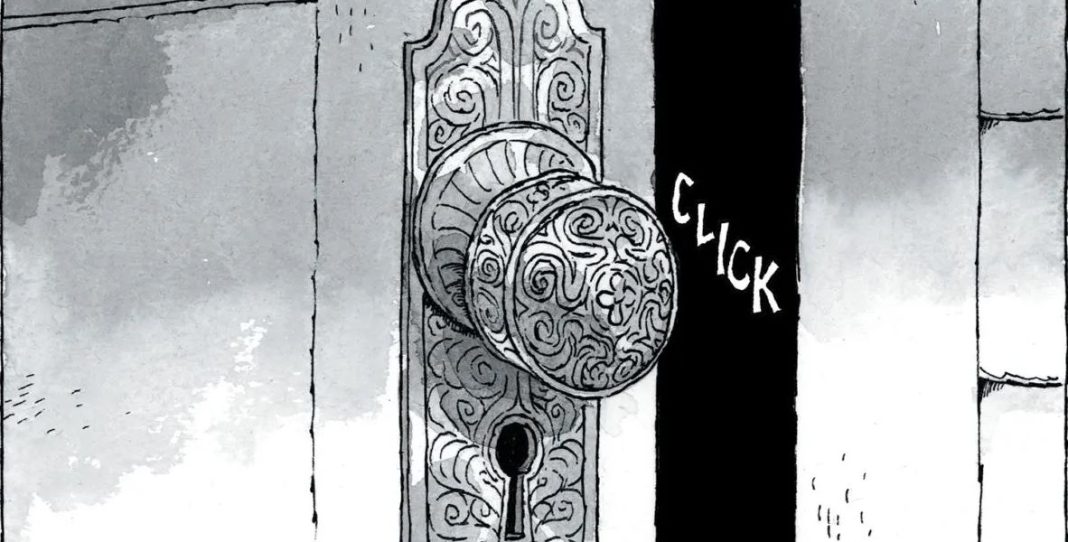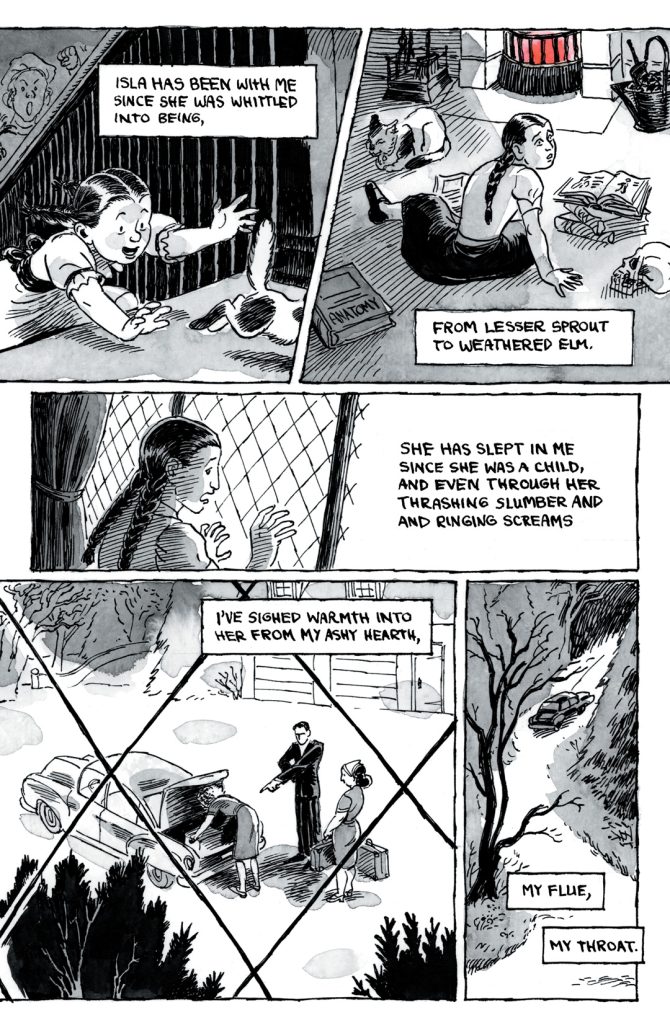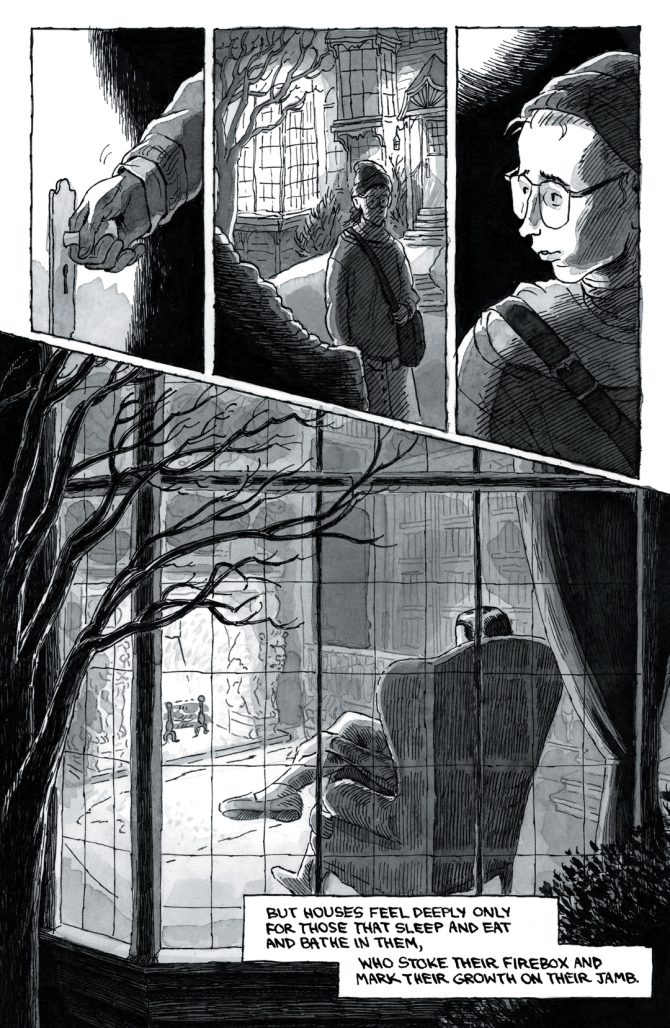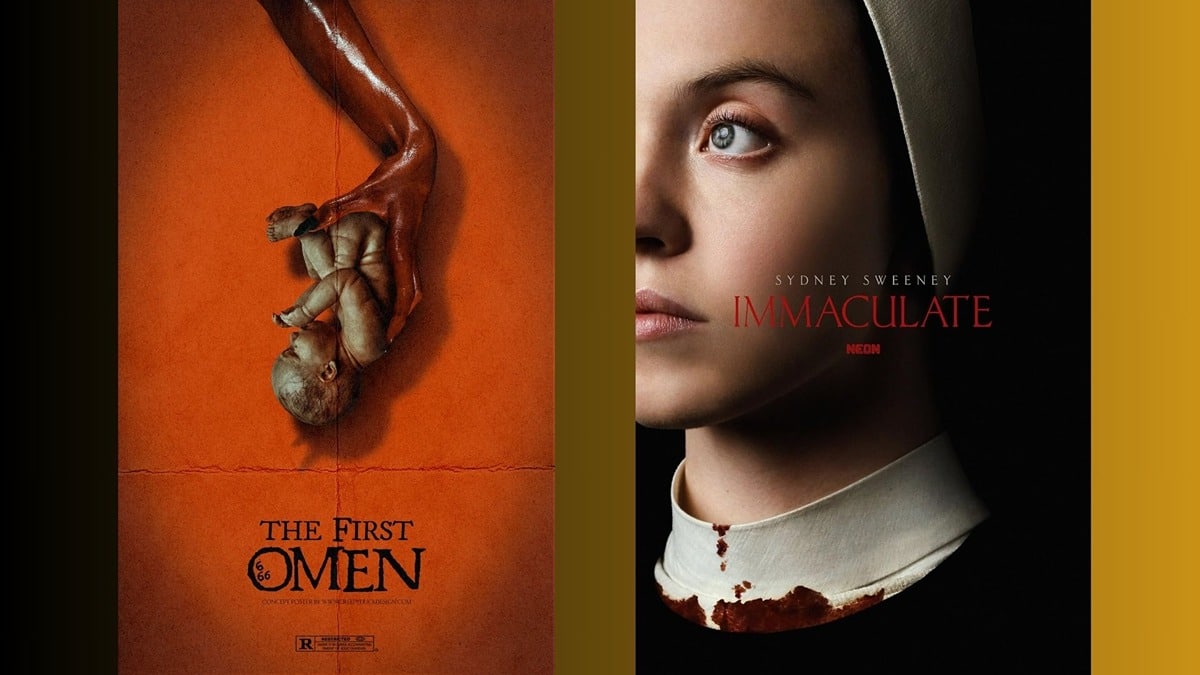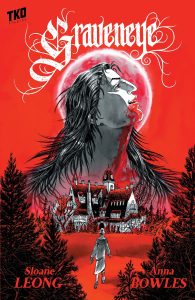
There are several recorded attempts at capturing the meaning of houses in fiction, of places that contains the lives of people that are either haunted, lost, or in search of something within them. For some, the house is a hungry thing that needs to be fed constantly. For others it is a prison for restless spirits that stand atop dreary hills or foggy mountainsides.
In Sloane Leong and Anna Bowles’ Graveneye the house is the narrator, a kind of curious observer that collects memories from its inhabitants while also making pointed observations about their life choices and their behavior. A bloodthirsty woman lives in a mansion deep in the woods, accompanied only by another woman who tends to the house and obsesses over its owner. Secrets unspool between them and horror takes over as the women find some things aren’t destined to be when a dark hunger hangs over every interaction.
In my review of the TKO Comics graphic novel, I praised the book’s intricate emotional arcs and how the house’s insight into the characters featured in it give it a unique perspective that impressive at every turn of the page. Bowles’ art is haunting and Leong’s script reminds of some of the best works in gothic horror literature without becoming just another haunted house story.
Graveneye’s success largely rests on the soundness of its core idea and how the house’s narration pushes readers to consider the narrative from an entirely different point of view. Leong’s lyrical writing style favors a more interpretive kind of reading. Meanings are constantly being renegotiated as the horrors of life come as conflicts dipped in dark poetry.

I had the opportunity to correspond with Sloane Leong to talk process and inspiration and how Graveneye’s most eye-catching components came about for a story narrated by a house filled with memories of violence and monsters. It follows below.
RICARDO SERRANO: This might be a clichéd question, asking about inspirations and what helped you put together this book, but given how unique and clever it is in its very form, what did play a role in the process of creating Graveneye? I for one felt a bit of Shirley Jackson and Edward Gorey in it, but it’s also so much more.
SLOANE LEONG: Thank you for the kind comparisons! Yeah, The Haunting of Hill House is one of my favorite books but I wasn’t consciously thinking about a lot of outside work when I started writing this story. This graphic novel started as a prose short story which consisted of the house’s narration. Two foundational narrative engines were having an almost alien perspective on a murder mystery, how we misinterpret other people, and romantic obsessions that result in dire consequences for both characters.
I hadn’t considered visual aspects for this until I started talking to Anna and her mastery over inking was inspiring on its own; she took the story and immediately began spinning out this incredibly vivid and unique concept art for the house and the characters. It was easy to feed off her creativity and skill!
SERRANO: Color is sparingly used throughout the story, but it’s there to accentuate certain emotions and deepen character arcs. What attracted you to the idea of keeping to the mostly black, grey, and white color palette, with other colors making surprise appearances?
LEONG: Despite having a reputation for being a fiend for color, I actually prefer black and white comics! There’s something about the simplicity of ink alone and reliance on line and texture and tone that lends itself to a richer imaginative rendering experience for me, probably because I grew up reading a lot of manga. Also, because Anna’s inking is so lush and varied–she’s a master of hatching, washes, textures–it was an easy decision to just do a spot color, which she could also apply in a range of ways.
SERRANO: What type of storytelling ideas did horror let you play with that might be specific or more accessible in that genre?
LEONG: I don’t really think about genre when I’m writing. I just try and tell the story I want first and then figure out the genre afterwards, but I find placing it in the genre and using the tropes and expectations that come with horror is powerful and engaging because I can follow all my complicated and ugly philosophical and aesthetic thoughts to their bitter, complex ends and readers can follow me with, usually, the openness and vulnerability I’m hoping for.
SERRANO: Given the intricate and inventive nature of the story, how did your collaboration with Anne Bowles affect the book in its final form?
LEONG: I trust Anna as a storyteller and cartoonist in her own right so mostly what I was doing was expanding upon the house’s narration in prose form, breaking down and adding descriptions of each scene and the emotional undercurrents running through the characters but ultimately letting her control layouts, pacing and acting.


